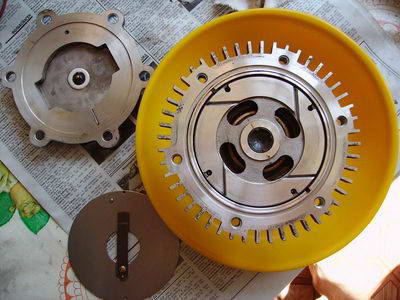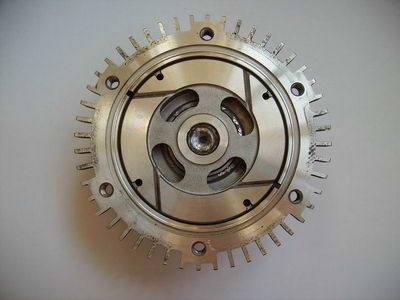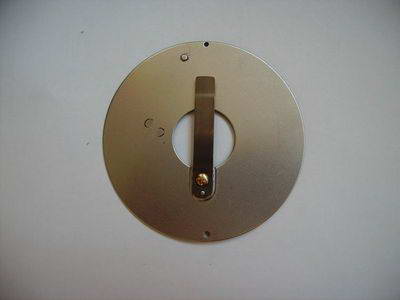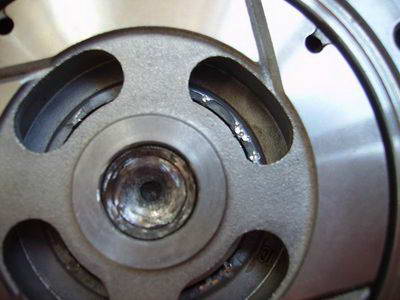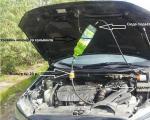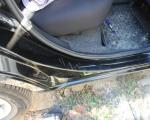Viscous coupling: principle of operation, do-it-yourself check and repair
After analyzing the comments of motorists on forums and social networks, it became obvious that drivers have a very abstract idea about such a simple and interesting device in many respects - a viscous coupling. So, read the details about the principle of operation, verification and self-repair of the viscous coupling.
How does a viscous fan clutch work?
viscous coupling - this is a special device that rotates the cooling fan thanks to a special fluid. It has a round shape with a silicone base filled with lubricant; serves for smooth regulation of the fan. The principle of operation at first glance seems complicated, however, if you look at it, it is not: the crankshaft rotates, transferring energy to the first clutch shaft. Further, the device accelerates, due to which the silicone inside it becomes more viscous. The clutch is blocked, after which the second disk begins to rotate, on which the radiator fan is located.
Viscous coupling is used on almost all motors, as the device is reliable and safe. If you put your hand into the moving mechanism through carelessness or inexperience, the device will stop, thus preventing injury.
How to check the visco coupling of the cooling fan
After a long downtime of the car, the viscous coupling needs an oil change, as well as a check of the condition and operation in general. In addition, failure is possible due to wear or any other reasons.
It is quite difficult to recognize a breakdown of a viscous coupling, but there are ways to check its performance.
Look at the frequency of revolutions of the device with a cold and warm engine. In the first case, strange sounds are usually not observed, and the number of revolutions is normal. When hot, the picture is different: extraneous noises are heard, and the frequency of rotation of the viscous coupling may not correspond to the norm.
Various kinds of noise often appear due to faulty bearings. Also, the cause of a malfunction of the device may be the sealing of the glands, or a special silicone fluid that has leaked out.
Self repair viscous coupling
If you notice an engine overheating, do not rush to do replacement viscous couplings. You may be able to repair the broken part yourself.
- The most common cause of failure is silicone leakage from the base of the part. To fill in new fluid, you need:
- Remove the viscous coupling from the water pump, and then disassemble it.
- On the disk of the device itself there is a plate with a spring, under which there is a hole for silicone fluid. You need to remove the pin with the utmost care, and then fill in the grease with a syringe. Keep in mind that during such a repair, the part is placed horizontally.
- It is enough to draw fifteen milliliters of oily liquid with a syringe.
- Slowly pour inside.
- Wait a few minutes without removing the syringe from the hole, so that the liquid has time to flow deeply into the viscous coupling.
- Wipe the surface of the device from excess liquid if necessary.
- Put the pin in place, and then install the part.
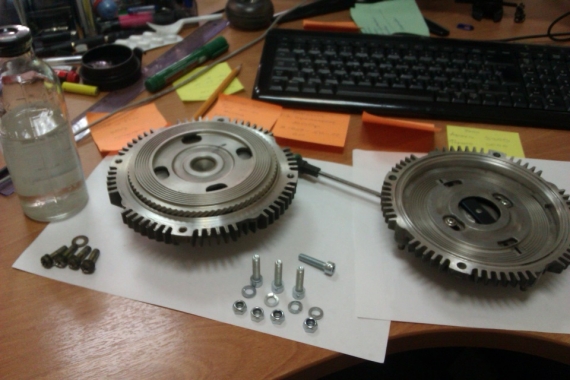
If you are not well versed in cars and do not know the principle of operation of certain parts, it is better not to start repairing yourself. The point here is not the possible breakdown of parts of the vehicle, but the difficulty of putting everything back together.
- Bearings are also a common cause of viscous coupling failure. There is only one symptom of such a malfunction: various kinds of noise in the area of \u200b\u200bthe cooling radiator.
- To repair the device, the first step is to remove it. To do this, unscrew the three bolts that secure the part. After that, the viscous coupling can be easily removed from the engine compartment.
- After removing the device, you can begin to replace the bearing. Replace them only when the assembly has been disassembled and the oil drained. Use a special tool to remove the bearing - a puller. If you use improvised means, you can completely damage the assembly.
- After installing a new bearing, you can proceed with the installation of the device. Do not forget to fill in new silicone fluid, which was drained before repairing the viscous coupling.
When you notice the "wrong behavior" of the coupling, you do not need to immediately change the entire part, because often it can be repaired. Special skills and abilities for this business are not required.
The only difficulty that may arise is finding a puller to remove the old bearing. The tool is not sold in every automotive store, which makes it difficult to repair the viscous coupling yourself. If you've been to every car dealership you know and can't find a puller, ask your driver friends. The rest of the details are easy to find.
Features of viscous coupling repair
- Not all such devices have a hole for filling an oily liquid. If you are a "newbie", do not try to repair the device yourself. Experienced craftsmen make holes on their own. Of course, you can also try to drill a hole at your own risk.
- Do not use brute force when manipulating the disk. If the aluminum on the shaft bends, the viscous coupling cannot be repaired - only a complete replacement of the device.
Viscous coupling repair on Mercedes-Benz: engine 111
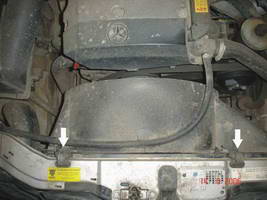
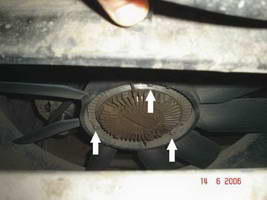
- Open the hood of the car and unfasten a few latches on the fan housing.
- Loosen the bolts with a 6 hex wrench.
- Remove the cooling fan.
- Rotate the cover 180° to the right. Otherwise, it will not work to remove the part. Therefore, getting to the viscous coupling will not work.
- Unscrew the viscous coupling with a 36 wrench. The jaws of the tool should be no thicker than 10 millimeters.
- After removing the device, clean it from dirt and dust.
- Next, you need to rivet the bimetallic plate of the viscous coupling on one side.
- Pull out the part disk and fill in the PMS-100 lubricant with a syringe.
- Assemble the viscous coupling back; install the device in the car.
Viscous coupling repair on Pajero: bearing replacement
